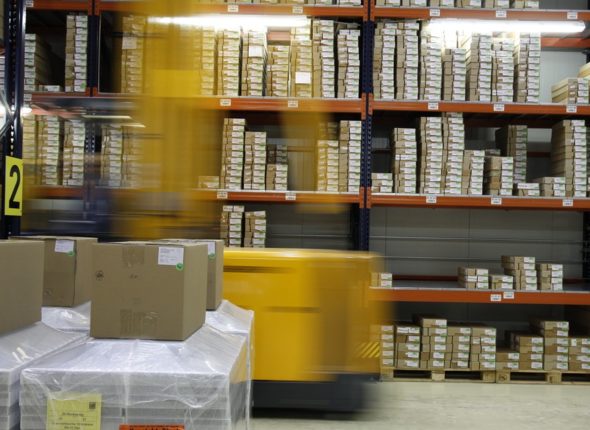In many pharma companies, IT systems no longer meet the dynamics and requirements of logistics and supply chain processes. In part III of our blog post series on tomorrow’s pharma logistics, you will learn about key IT trends and how they impact your pharma logistics processes.
Part III: Is your IT ready for 2025?
Over years, even decades, untouched IT environments often have turned into a bottleneck and a challenge to operational processes. They do not support the requirements of today’s business, for example regarding supply chain traceability and the flexibility to act in a volatile and complex environment. Identifying suitable IT solutions to take advantage of recent developments is not easy as markets advance rapidly. Moreover, one does not want to take a false decision under the pressure of SAP’s announcement to stop the support for their R3 suite in 2025. Here some key trends to be considered when looking at your IT set up:
No-touch processes
In most cases, companies are not fully aware of the potential of automation related to transport management processes and their dependency on logistics service providers in this context. The consequences are costly inefficiencies and the exposure to capacity constraints in the transport market endangering the supply chain reliability or increasing cost of handling. The objective therefore is to identify repetitive and regular processes and then strive for minimum manual interference, which is not a contradiction in the patient-focused pharma logistics.
Integration of EWM and TM
The chance to review current processes and analyze them with the objective to find potential lead-time savings along the value chain or to increase the flexibility in your supply chain is also given by closer integrating the Warehouse Management System (WMS) and Transport Management Systems (TMS). System enhancements, for example based on data science, AI and Industrial IoT, as well as the integration with collaboration platforms and yard management provide additional value.
Collaboration platforms open up new opportunities
However, Integrating TMS and WMS is not enough to perform a proper track & trace including batch and serial numbers as well as the adherence to the related temperature and even humidity conditions along the supply chain. With pharma supply chains demanding more and more the ability to fully track the shipment status assuring on-time performance and even lower inventory levels, the capability of tracing every single serial number (since February 2019 required according to EU regulations) calls even more for the use of powerful and integrated systems. Therefore, pharma supply chain operations should also consider the use of collaboration platforms such as SAP LBN, GT Nexus, iNet or Amber Road to connect with a changing mix of (preselected) logistics service providers and CMOs as well as to incorporate e.g. temperature information coming from data loggers as well as big data regarding weather, traffic and even social media.
Blockchain platforms for special requirements
However, platform does not equal platform, specifically when it comes to sensitive patient-specific data. A team of pharma supply chain and blockchain experts at CAMELOT investigated the specific requirements towards IT solutions for high-end biotech supply chains. Handling sensitive information, e.g. patients’ data related to the treatment of human tissue along a global supply chain involves many different parties. This requires an extraordinary and temper-proved approach towards data security and data privacy. With each interface from one supply chain stakeholder to another, the risk of data loss, data theft or even data manipulation is given. To tackle this significant challenge, CAMELOT’s spin-off Hypertrust Patient Data Care developed, based on blockchain technology, a data exchange platform to support the customer needs in this area for the highest level of security against failure. To further ensure data security and safety, the Hypertrust Patient Data care team developed together with Dell and Intel a kind of digital fingerprint taken from the submitting processor to identify and approve the issuer.
Adding such innovative blockchain or “traditional” collaborative platform solutions allows you to combine your ERP system with the newest cloud application, the two speeds of your IT application landscape. The integration of the different SAP modules in this context of course allows the sharing of information across applications creating integrated processes and related responsibilities.
If you are interested in finding out how to optimally set up your pharma logistics IT landscape, we will be happy to connect you with the experts from our affiliate Camelot ITLab, a leader in the implementation of SAP S/4HANA in the pharma market as well as the provision of an integrated solution of SAP EWM and TM in S/4HANA. Camelot ITLab can provide your TM including value-adding enhancements according to your needs as well as the integration with collaboration platforms and yard management solutions.
In our next blog post, we will provide insights into new opportunities when collaborating with 3PL/4PL and LLP.

